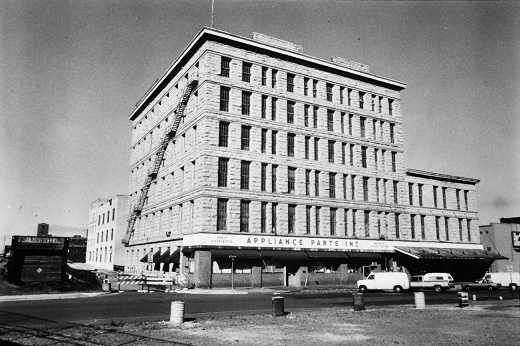Overview
The Moline, Milburn and Stoddard Co. Building is notable for its simple, functional design.
- Location: 250 3rd Avenue North
- Neighborhood: Warehouse District
The Moline, Milburn and Stoddard Co. Building is notable for its simple, functional design.

The Moline, Milburn and Stoddard Co. Building is notable for its simple, functional design. It was built in 1886 and designed by architect Joseph Haley. Two parapets rise above the roofline. The south parapet has the letters of “M., M & S., Co.” to refer to the original owner. The north parapet has the build year. This building is located near a railroad spur, which made it easy to transport goods in and out.
Moline, Milburn and Stoddard Co. was a leading manufacturer in farm machinery, wagons, and carriages. The company used the building as a factory, warehouse, and salesroom. Stating in the early 1900s, the building was home to National Biscuit Company. The company used the building as a bakery and warehouse. They installed brick ovens on the fifth and sixth floors. Starting in the 1950s, F.C. Hayer Company used the building as a wholesale warehouse. This company specialized in household appliances. A painted ghost sign remains on the north wall of the six-story part.
The building’s simple design reflects the Chicago Commercial style. The building’s form follows its function and aims for efficiency. The walls have horizontal bands of limestone. The simple windows were unusual for this time period. In 1902, a three-story addition was built at the north end of the six-story building. It was designed following the style of the original building. A wood cornice was added along the roofline.
1988 photo: Courtesy of Hennepin County Library
Historic Preservation
Phone
Address
Public Service Center
505 Fourth Ave. S., Room 320
Minneapolis, MN 55415